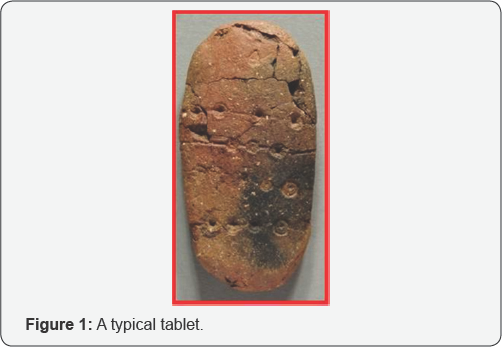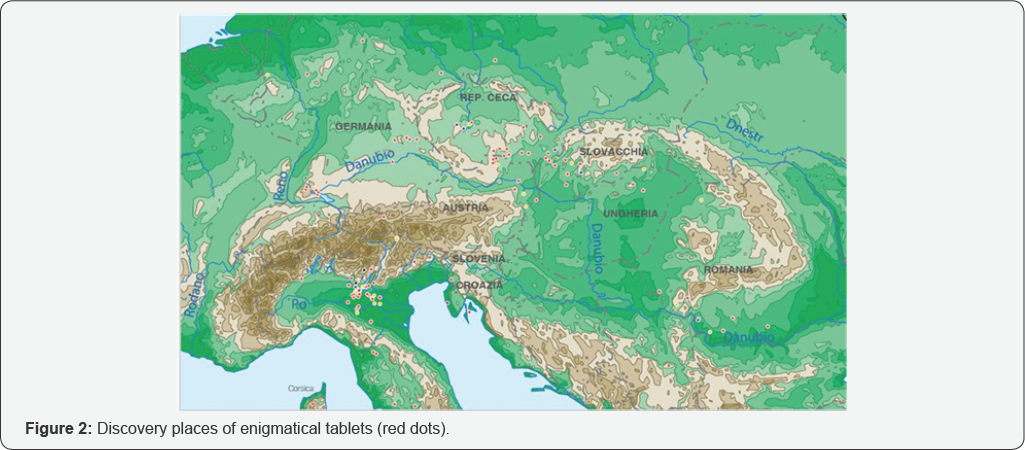Computational Intelligence and Precision Archaeology
Enzo Grossi1* and Annamaria Ravagnan2
1Department of Semeion Research Center , Roma, Italy
2ICOM Italy
Submission: November 06, 2017; Published: December 11, 2018
*Corresponding author: Enzo Grossi, Semeion Research Center, Via Sersale, 117 - 00128 Roma, Italy, Email: Enzo.Grossi@bracco.com
How to cite this article: Enzo G, Annamaria R. Computational Intelligence and Precision Archaeology. Glob J Arch & Anthropol. 2017; 2(3): 555590.DOI:10.19080/GJAA.2018.02.555590
Opinion
As it is happening in the medical field where we are facing a cultural revolution with the advent of machine learning systems for precision medicine, we envisage the same for archeology. There are a number of analogies which justify this assumption.
Archeological finds are entities very difficult to define precisely as it is true for human subjects. Some of their particular characteristics like shape, size, structure and symbols are easy to describe but the high complexity of the combination of these features in each object hampers clustering them in a meaningful way and understanding possible cultural trajectories in their geographic spread. Such archaeological finds give us a complex and unprecedented glimpse into human history like a wide range of biomedical information including molecular, genomic, cellular, clinical, behavioral, physiological, and environmental can offer for specific disease out come.
Also the point zero of a particular cultural spread often remains obscure like the hidden source of an harmful epidemic spread. In this brief report we offer two examples of computational intelligence application in archeologic settings in relation to the Enigmatic Tablets Project.
The term "enigmatic tablet" refers to a class of finds represented by small clay or stone objects, oval or rectangular in shape, dating back to the Early-middle Bronze Age (circa 21001400 BC), with mysterious symbols impressed and/or engraved on them (Figure 1). The distribution of these objects covers a geographic area that stretches from Lake Garda in Italy to the Carpathian and South-Danube territory (Figure 2).


The "Enigmatic Tablets Project" started in Italy in 2008 with the aim to collect and analyze in a computerized database enigmatic tablets found in the wide European territory with the involvement of 59 European Museums [1]. The final data base consisted in 326 tablets described by more than one hundred variables related to shape, sequence, syntax, physical characteristics, disposition, and symbols on different rows as specified below:
• Shape: We have identified nine main shapes: short rectangular; rectangular medium with straight edges;rectangular medium with convex edges; rectangular medium with concave edges; prolonged rectangular; trapezoidal; ovoid; ellipsoidal; circular.
• Sequence (a: continuous; b: rows or signs grouped in the center; c: lines symmetrically close to edges; d: lines asymmetrically close to edges).
• Syntax (S1: free marks; S2: marks aligned without rows; S3: marks inside groves; S4: marks tangent to the row; S5: marks cut by line; S6: marks cut by line with free apex marks; S7: marks on non-continuous rows; S8: marks between empty rows; S9: rows without marks; S10: empty rows).
• Physical characteristics (width, length, thickness).
• Disposition (number of marks on each row).
• Symbols on different rows (number of cupels; number of cupels with cross; number of triangles; number of rectangles; number of squares; number of grooves; number of Latin crosses; number of St. Andrew cross; number of oblique arms cross; number of pendants).
The overall emerging picture is extremely complex. Even if specific and clear average trends can be defined, since the features mix is highly variable, it is very difficult to assign each single tablet to a definite prototype and to establish similarity patterns [2].
Thanks to an analysis performed with Self Organizing Maps [3-4], a special kind of artificial neural networks, it has been possible to demonstrate the existence of a fuzzy transition of features going from Italy, to central Europe, Eastern Europe and Romania, pointing out a progressive spatiotemporal distribution.
An algorithm developed by Semeion Research Center in Rome called Topological Weighted Centroid, already applied with success in the discovery of the hidden sources of epidemics [5- 7],when fed with spatial coordinates of places of tablets discovery indicated a restricted area near Garda lake (specifically near the city of Ceresara) as the origin of enigmatic tablets cultural spread. The use of a special function of the algorithm named "nonlinear minimum spanning tree", allowed to hypothesize that the spread from Italy towards Eastern Europe took place through the Istria peninsula.
An independent successive discovery about a massive finding of broken tablets deposit in Monkodonia (Istria) by Kristina Mihovilic and Bernhard Haensel made this hypothesis plausible, figuring out a complex civilization that starting from Italy was progressively spreading to Eastern Europe following Danube River.
From this unexpected result, we have to consider that the spatial dimension when treated with powerful algorithms may carry also relational information as to why certain entities 'stay together' in a given environment.
The perspectives emerging from this work seem particularly encouraging and suggest that machine learning systems will allow in the future to build a novel data driven precision archeology.
Referencesn
- AdalbertoPiccoli: The Enigmatic Tablets Project http://www. tavoletteenigmatiche.it/download/ICeng.pdf
- Enzo Grossi & Annamaria Ravagnan (2012) Computational Intelligence Applied To Enigmatic Tablets in Search of Their Plausible Spread Path. 16th Symposium on Mediterranean Archaeology, Florence, Italy
- Kohonen T (1982) Self-organized formation of topologically correct feature maps. Biol Cybern 43(1): 59-69.
- Grossi E, Massini G, Buscema M, Savare R, Maurelli G (2005) Two different Alzheimer diseases in men and women: clues from advanced neural networks and artificial intelligence. Gend Med 2(2): 106-117.
- Buscema M, Grossi E, Bronstein A, Lodwick W, Asadi-Zeydabadi M, et al. (2013) A New Algorithm for Identifying Possible Epidemic Sources with Application to the German Escherichia coli Outbreak. International Journal of GEO Information 2(1): 155-200.
- Enzo Grossi, Massimo Buscema, Tom Jefferson (2009) The Topological Weighted Centroid and the Semantic of the Physical Space - Application In: "Artificial Adaptive Systems in Medicine"; Buscema & Grossi (Eds.), pp. 79-89
- Buscema M, Grossi E, Breda M, Jefferson T (2009) Outbreaks source: A new mathematical approach to identify their possible location. Physica A 388(22): 4736-4762.






























